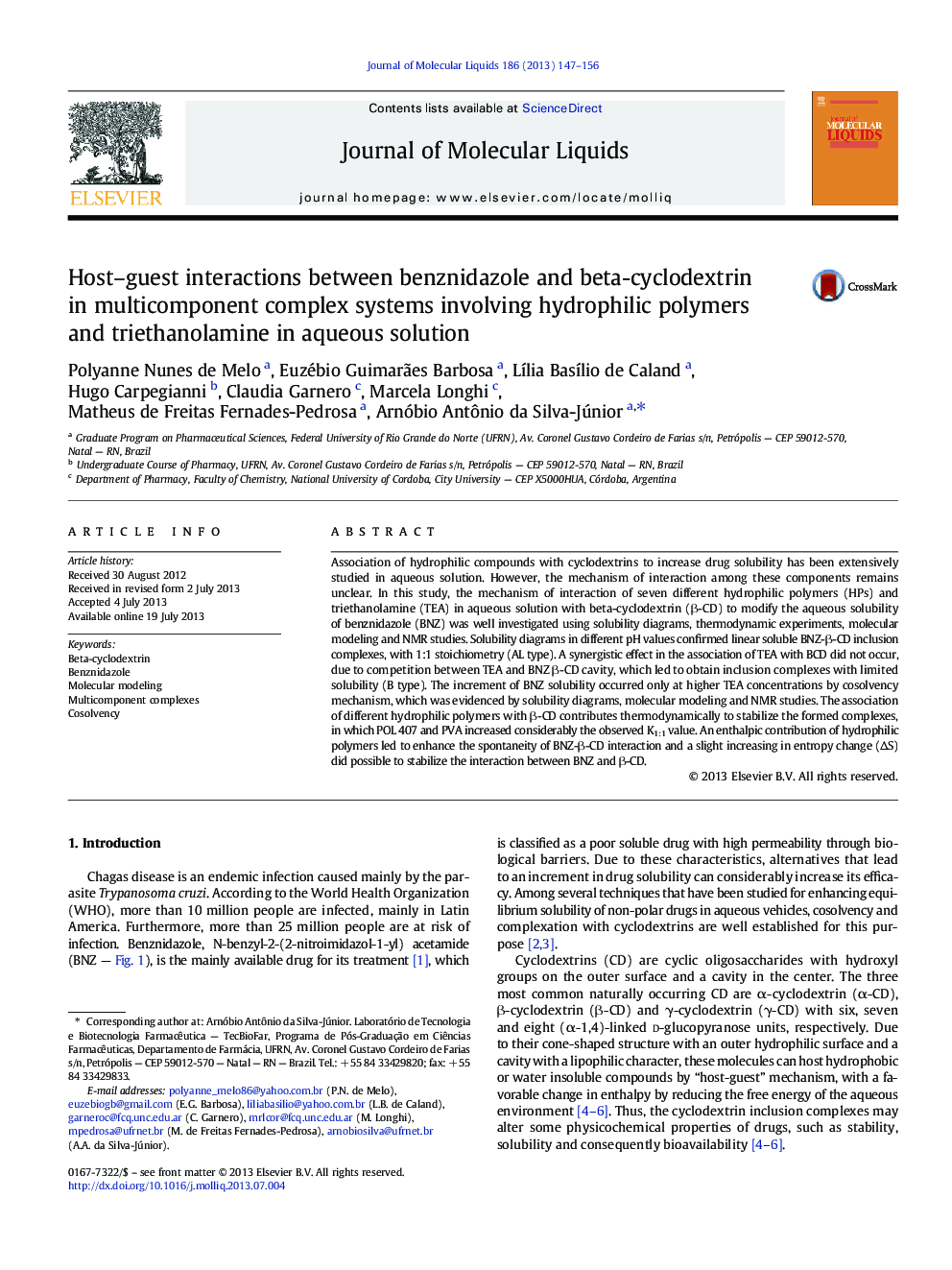| Article ID | Journal | Published Year | Pages | File Type |
|---|---|---|---|---|
| 5411935 | Journal of Molecular Liquids | 2013 | 10 Pages |
Abstract
Association of hydrophilic compounds with cyclodextrins to increase drug solubility has been extensively studied in aqueous solution. However, the mechanism of interaction among these components remains unclear. In this study, the mechanism of interaction of seven different hydrophilic polymers (HPs) and triethanolamine (TEA) in aqueous solution with beta-cyclodextrin (β-CD) to modify the aqueous solubility of benznidazole (BNZ) was well investigated using solubility diagrams, thermodynamic experiments, molecular modeling and NMR studies. Solubility diagrams in different pH values confirmed linear soluble BNZ-β-CD inclusion complexes, with 1:1 stoichiometry (AL type). A synergistic effect in the association of TEA with BCD did not occur, due to competition between TEA and BNZ β-CD cavity, which led to obtain inclusion complexes with limited solubility (B type). The increment of BNZ solubility occurred only at higher TEA concentrations by cosolvency mechanism, which was evidenced by solubility diagrams, molecular modeling and NMR studies. The association of different hydrophilic polymers with β-CD contributes thermodynamically to stabilize the formed complexes, in which POL 407 and PVA increased considerably the observed K1:1 value. An enthalpic contribution of hydrophilic polymers led to enhance the spontaneity of BNZ-β-CD interaction and a slight increasing in entropy change (ÎS) did possible to stabilize the interaction between BNZ and β-CD.
Related Topics
Physical Sciences and Engineering
Chemistry
Physical and Theoretical Chemistry
Authors
Polyanne Nunes de Melo, Euzébio Guimarães Barbosa, LÃlia BasÃlio de Caland, Hugo Carpegianni, Claudia Garnero, Marcela Longhi, Matheus de Freitas Fernades-Pedrosa, Arnóbio Antônio da Silva-Júnior,
